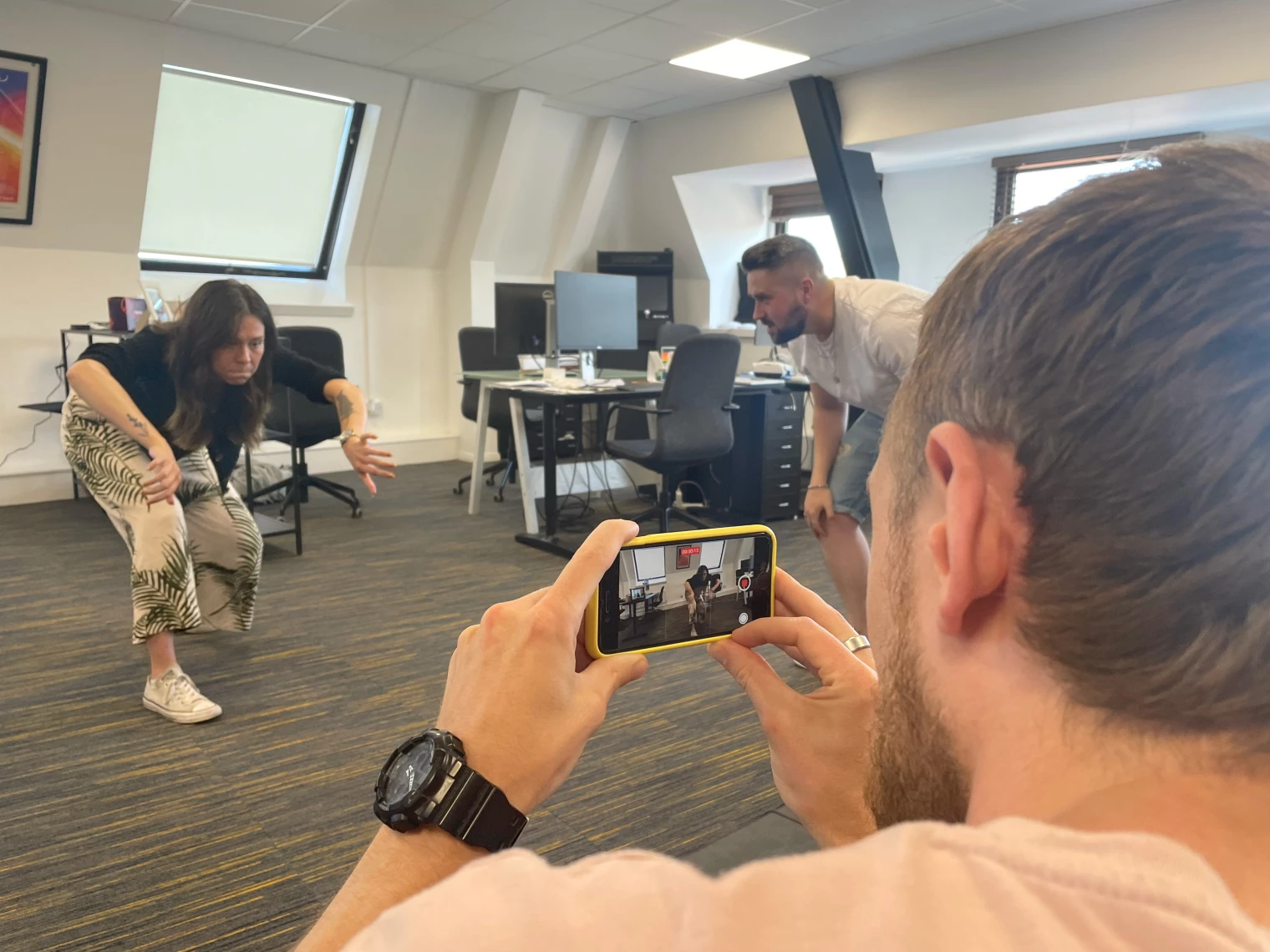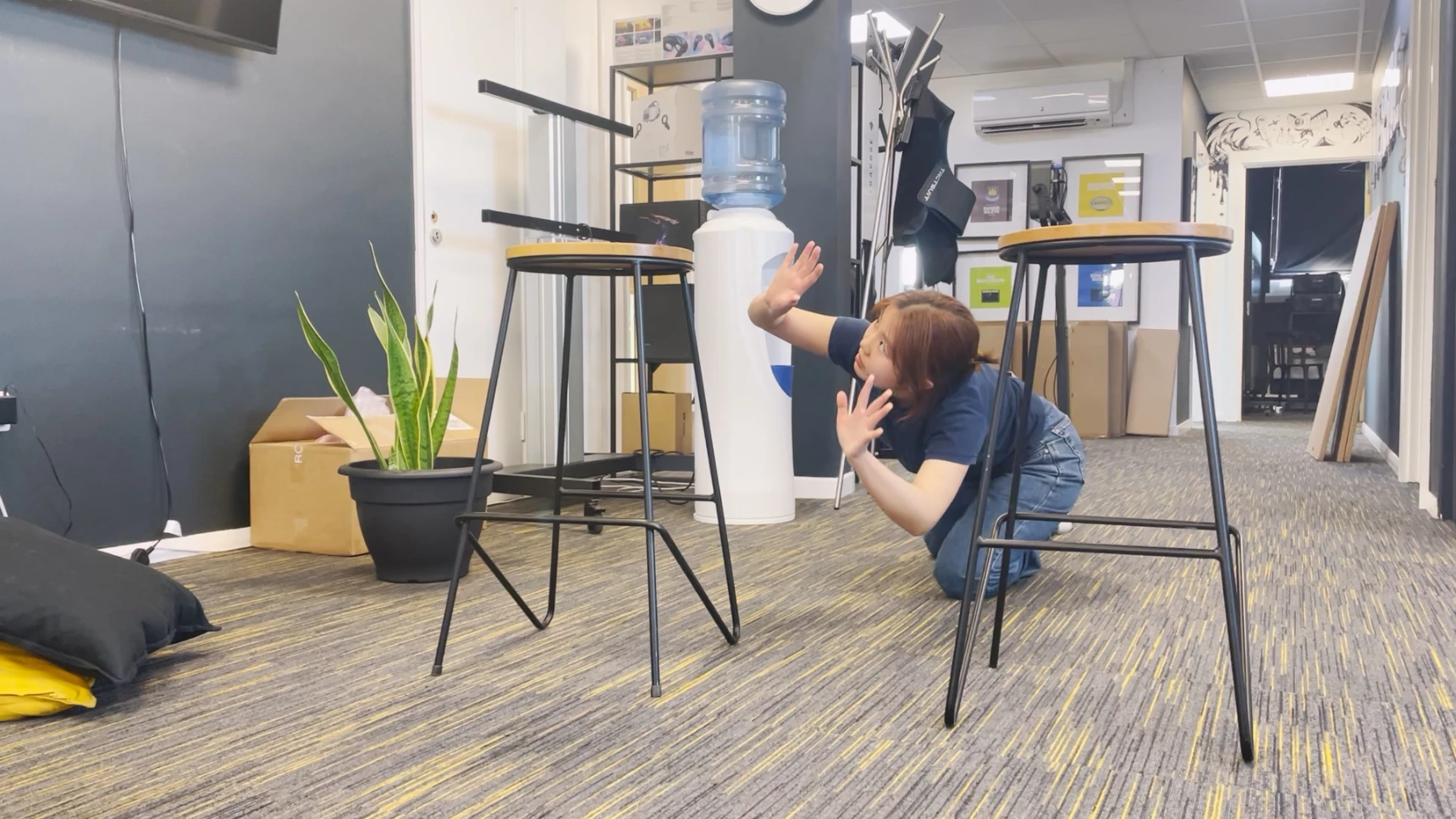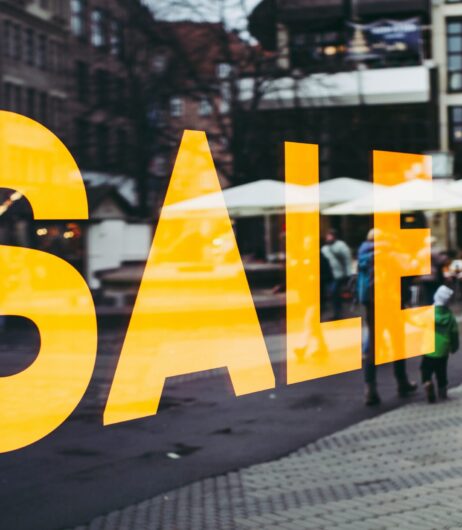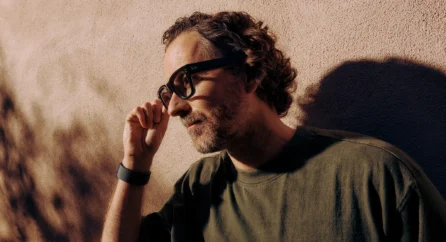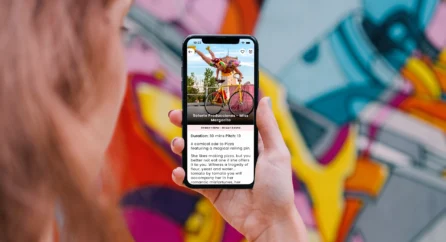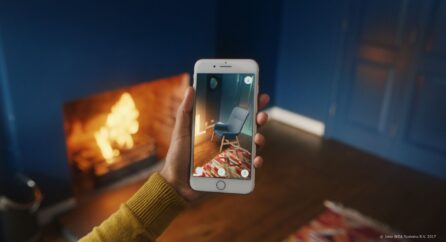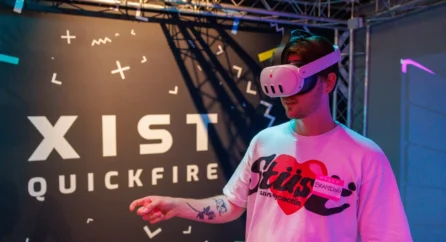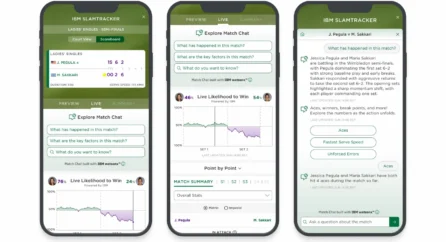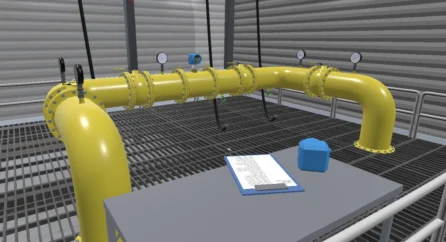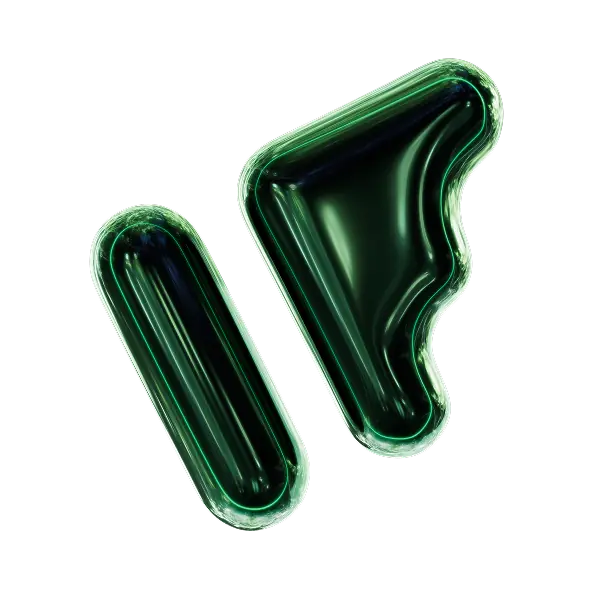Home Knowledge Base Our creative development workshops – movement, physicality and acting for motion capture
Our creative development workshops – movement, physicality and acting for motion capture
22nd February 2024

As part of our ongoing series of creative development workshops here in our Norwich studio we wanted to explore movement and physicality. As creatives working with technology, we often spend a lot of our time at our desks, a lot of time thinking and analysing things like movement and three dimensional space, but not so much time actually experiencing these things with our own bodies. To help us delve into these topics we invited the world renowned Movement Director Sarah Perry of Shapes In Motion to run us through our paces.
Sarah led a discussion with the group about all the ways that we incorporate movement and awareness of space into our work already, from the obvious things like the movement of an animated character, to wider subjects such as designing UI interactions or thinking about the way people interpret space in an interactive installation.
Following the discussion we were up on our feet to start exploring what it feels to actually move through space in different ways and to bring a specific awareness to the way we navigate and interact with the world around us. Drawing from the theories of luminaries from the worlds of dance and theatre such as Rudolph Laban to explore ideas like the kinesphere, space harmony, direct or indirect movement, close and far movements and more. It’s one thing to talk about movement, but another to fully experience it yourself!
After this exploration, we got into some acting. Specifically thinking about acting for motion capture and how we can use movement and physicality as one of our tools to communicate ideas and tell stories. Thinking first about the mechanics of how different characters move, but also why they move. What is the motivation behind each movement, and what does that tell the audience about the character, about their history and about the world around them. Sarah gave us a great character brief, filled with detail and we broke into groups, with each group swapping roles between directors and actors. After some experimentation and some play, we had a range of very different, but all compelling takes on the character. Each with its own nuances and ideas.
Taking these performances into the world of motion capture enables us to really see the distinctness of each performance. By transposing the movements onto a mannequin figure we’re able to separate the performance from the performer and really focus on the quality of the movement and the story that it tells.
Wrapping up the workshop it was clear that the fusion of theory and practice has not only broadened our understanding but has also equipped us with a refined toolkit for incorporating movement and physicality into our creative process. Something that can only help to enrich our work moving forward.
Related posts

